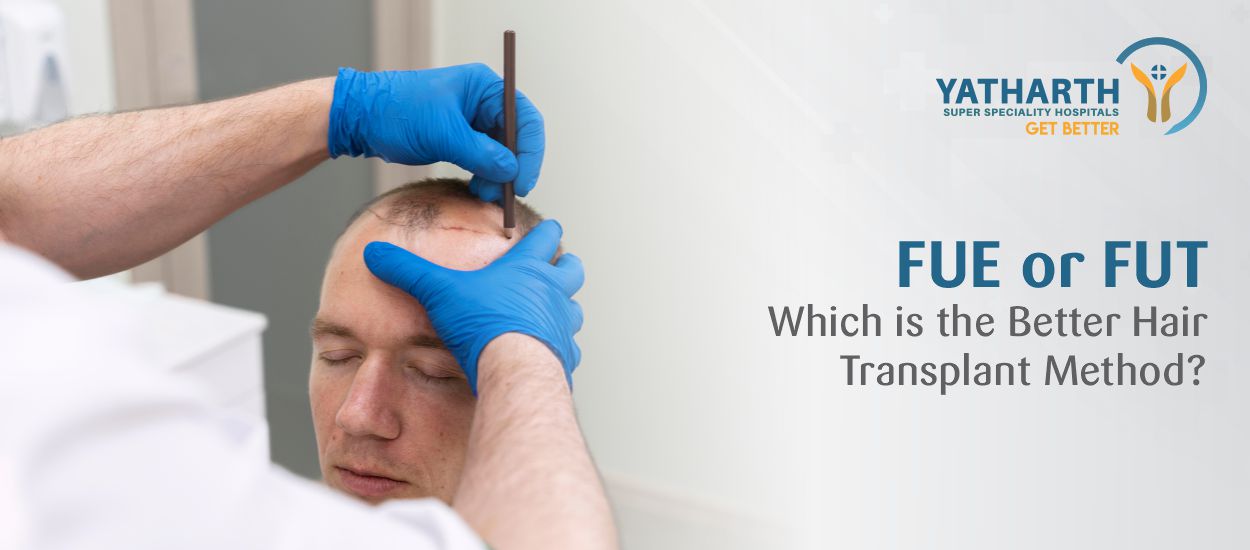Overview
Hair fall is a common problem globally. As per one study, androgenetic alopecia (the most common type of hair loss) affects 85% of males by 50 and 40% of females by the same age. The condition is triggered by several factors, including hormones, genetics, nutritional deficiency and other causes, although the precise cause is not known.
The first question that people seeking a hair transplant ask is – ‘what’s the best hair transplant method?’ To answer this, one should understand the two popular hair restoration alternatives – FUE (follicular unit excision) and FUT (follicular unit transplantation). Both methods are effective in restoring your hair, imparting natural-looking, thicker, fuller hair locks. However, both have key differences. Understanding this will help decide what suits you better, FUE or FUT.
Salient Features of FUE Hair Transplants
In FUE hair transplantation, each separate follicular unit is harvested from donor areas of your scalp. By extracting hair from different sections of the donor area, your hair transplant surgeon ensures there is no noticeable thinning in one region. In FUE, hair harvesting is done via microscopic extraction of grafts.
The follicles are then prepared for implantation before being transplanted into specific regions of your scalp with baldness or thinning hair. As this procedure leaves no visible scars, it is ideal for people who maintain or wish to have shorter hairstyles. Patients generally have no pain after this treatment though there may be slight swelling for a few days.
Understanding FUT Hair Transplants
Unlike FUE, in FUT hair transplant your surgeon will extract a linear strip of skin from the scalp in the donor area. It is also called the ‘strip method’ since this strip is split into sections and prepared for implantation in regions with a thinning or bald patch. There will be one long linear scar across the donor scalp. But this method is now obsolete as it leaves a scar and there may be prolonged pain in the post-surgery period.
What is the Best Hair Transplant Method?
With the basic features of these two choices clarified, it brings back the original query – which is the best method for hair restoration? While both methods can improve your hairline by giving you a fuller look, the FUE method has some advantages. Nonetheless, a person must have adequate donor hair for FUE transplant.
Decoding the FUE Hair Transplant Advantage
Hair restoration through FUE has distinct advantages such as:
-
Excellent results: As hair follicles are inspected after extraction, it ensures only healthy hair grafts are used. This gives great results by providing a fuller head of hair and a more prominent hairline with no scarring.
-
Speedy recovery: As no skin grafts or stitching is needed in the FUE procedure, you could resume normal activities within days. Also, since the method is minimally invasive, not much pain is experienced following the treatment.
Success Rate of FUE Hair Transplant
Both FUE and the traditional FUT have a graft survival rate of 90%. This depends on the skill, experience and knowledge of the doctor who performs the procedure. Ideally, a dermatologist and plastic surgeon are eligible to do hair transplant surgery.















